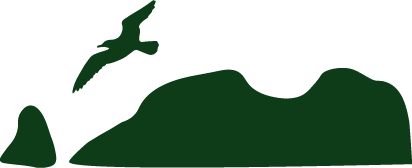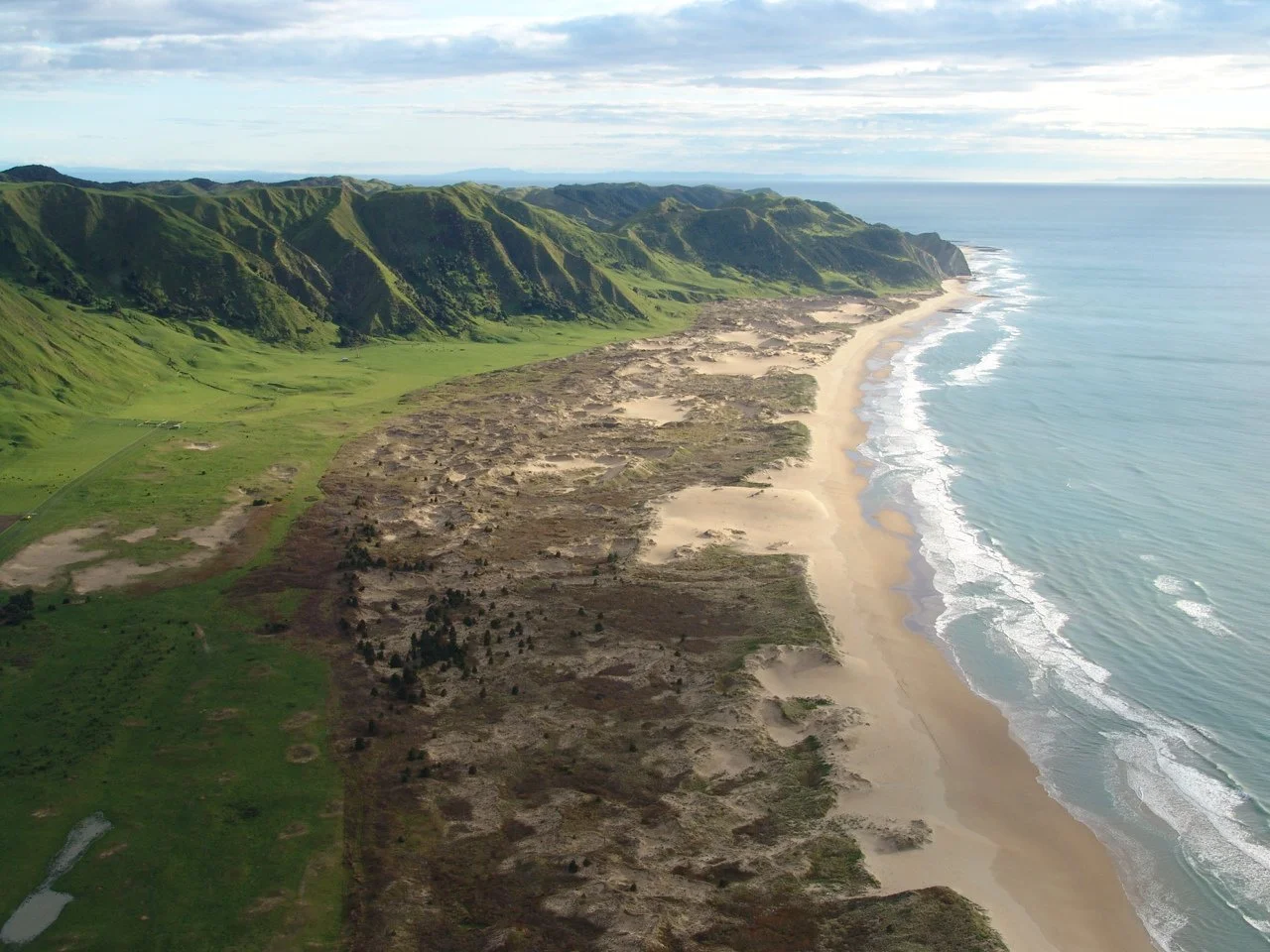

CONSERVATION
Cape Sanctuary’s main focus is restoring the Cape Kidnappers Peninsula to support continual growth of native bird and reptile populations for years to come. As a region, Hawke’s Bay has historically been left out of the conservation conversation. With little remnant forest, and a drastically modified coastline - little habitat remained to support wildlife. Extensive farmland provided perfect habitat for rabbits and the apex predators they attract, notably ferrets, stoats and cats causing further decline to bird and reptile life.
aIn fifteen years, Cape Sanctuary has transformed the outlook for conservation in our region. Our commitment to building, protecting and monitoring native forest alongside our ‘zero tolerance’ to introduced predators has not only ensured habitat for wildlife, but has re-set our micro-climate, provided an exemplar for future restorative efforts and has fostered a conservation community.

Visible Change
2015-2022
‘Those who can’t change their minds can’t change anything’
In 2005 the vision of establishing a wildlife sanctuary on a barren peninsula was deemed bold by some, and fit for failure by many.
We were told trees would never grow, kiwi would never survive and seabirds would never return.
Flash forward seventeen years and our plantings on the Ocean Beach hillsides have flourished into forest, supporting a wealth of wildlife.
It’s hard to map progress on a daily basis, sometimes we need to take a step back in time to see what’s been achieved.
HABITAT RESTORATION
Every year Cape Sanctuary’s commercial sized nurseries produce 50,000 - 70,0000 native trees destined for planting in the Ocean Beach Wilderness Area and wider surrounds. Volunteers collect seeds from local sources and bring them back to our nurseries. The nursery team consists of two part time staff members Rick and Jose and is supported by a strong team of dedicated volunteers. Once seedlings reach a viable size they are planted by Cape Sanctuary’s Jobs for Nature crew, Te Ngahere. Volunteer planting days are held on weekend’s during May and July. They provide great opportunity for community engagement and often result in upwards of 2,000 trees planted!

Habitats
THE ROUGH BLOCK
The ‘Rough Block’, 500ha of kanuka dominant forest is at the heart of Cape Sanctuary. Despite being farmed for over 100 years, stretches of unpalatable kanuka and remnant forest in deeply incised creek beds survived. In 2012, the rough block was officially retired from farming, proceeding the removal of possums, goats and deer. Free from browsing pressure, the dormant seedbeds within the creeks sprung to life allowing for the expansion of forest into surrounding hillsides.
Nowadays the rough block boasts a biodiverse habitat of tree, fungi, orchid and fern species- a safe haven for translocated and self re-introduced forest birds including kaka, kakariki, kereru, robins and tomtits.
To learn more about our floral monitoring, check our Cape Sanctuary iNaturalist page
Dune systems
Despite being a nationally recognised area of natural significance, prior to the conception of Cape Sanctuary, the dunes were merely an extension of surrounding farmland. Wintering cattle, rabbits, and goats depleted the pre-existing native flora. Invasive marram grass stabilised the dunes, disabling their natural movements and displacing the species dependent on such.
What followed was a fifteen-year restoration project outlined by ecologist John McLennan and guided by Para Te Huia, Mana Whenua of Ngati Mihiroa. Extensive removal of invasive weeds, re-introduction of native vegetation and eradication of browsing pressures brought back the mana - or ‘life-force’ of the dunes. Future works include the restoration of historically prevalent dune slack wetlands, katipo survey and the re-introduction of locally extinct vegetation.
OCEAN BEACH FOREst
Since 2006, close to one million native trees have been planted in the Ocean Beach Wilderness Area. The forested hillsides are a stark contrast to the barren scape a mere fifteen years ago.
Perched above the Ocean Beach cliffs is our 2ha pest-free enclosure, the ‘sea bird site’ - home to our most precious taonga. Despite being told the harsh dry landscape held no hope for forest growth, Cape Sanctuary committed to extensive plantings in 2007.
Although barren at the time, the soil remained fertile from centuries of sea bird occupation. From humble beginnings, a lush Coastal forest has emerged. Giant weta, tuatara, skinks, geckos takahe and a plethora of sea birds now flourish in this safe haven.
ModifiedLand
To achieve conservation at scale it has to be sustainable. With the national goal of a predator free 2050, it is crucial for all habitat to be included in the conservation discussion. While we continually look to expand and enhance our native forests, we are realistic and appreciate the need and value in production land. With 50% of the sanctuary existing as either farmland or forestry, Cape Sanctuary serves as a miniature model of the predator free dream accounting for New Zealand’s diverse range of modified landscapes.

farmland
The Cape Kidnappers Farm constitutes the majority of land included in the sanctuary. Despite having purpose-built planted ponds, our pateke ducks prefer breeding at stock-ponds and at Ocean Beach, green pastures for sheep and beef grazing doubles up as easy pickings for foraging Takahe!
Tourism
After dark, the world renowned Cape Kidnappers Golf Course transforms into a midnight feast for kiwi as our elusive birds sneak out from the deep native gullies and onto the fairway. Bridges across intimidating ravines provide an alternative safe access while manicured green makes for quick travel.
forestry
Approximately 400ha of Cape Sanctuary is in pine forest. Exotic forest has proven a favourable environment for kiwi. Cape Sanctuary’s work with kiwi mitigation is paving the way for safe harvest in high-density kiwi habitat.














